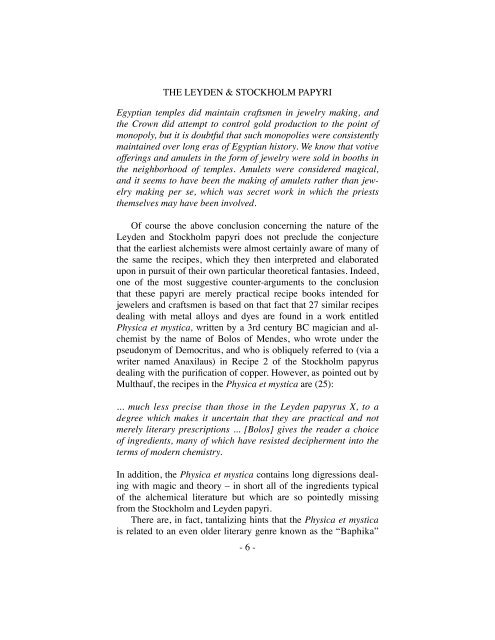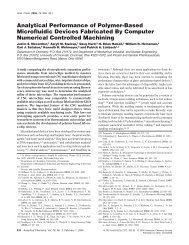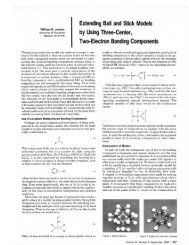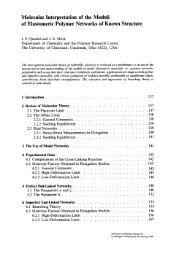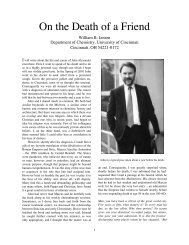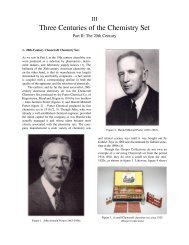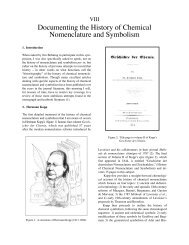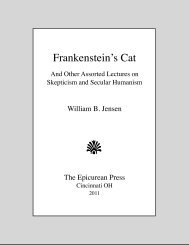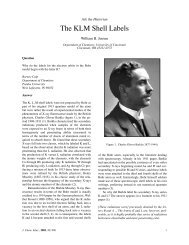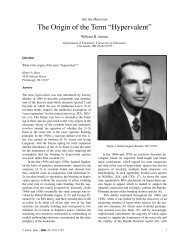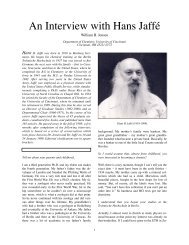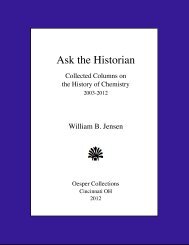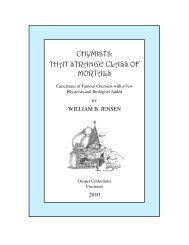The Leyden and Stockholm Papyri - University of Cincinnati
The Leyden and Stockholm Papyri - University of Cincinnati
The Leyden and Stockholm Papyri - University of Cincinnati
Create successful ePaper yourself
Turn your PDF publications into a flip-book with our unique Google optimized e-Paper software.
THE LEYDEN & STOCKHOLM PAPYRI<br />
Egyptian temples did maintain craftsmen in jewelry making, <strong>and</strong><br />
the Crown did attempt to control gold production to the point <strong>of</strong><br />
monopoly, but it is doubtful that such monopolies were consistently<br />
maintained over long eras <strong>of</strong> Egyptian history. We know that votive<br />
<strong>of</strong>ferings <strong>and</strong> amulets in the form <strong>of</strong> jewelry were sold in booths in<br />
the neighborhood <strong>of</strong> temples. Amulets were considered magical,<br />
<strong>and</strong> it seems to have been the making <strong>of</strong> amulets rather than jewelry<br />
making per se, which was secret work in which the priests<br />
themselves may have been involved.<br />
! Of course the above conclusion concerning the nature <strong>of</strong> the<br />
<strong>Leyden</strong> <strong>and</strong> <strong>Stockholm</strong> papyri does not preclude the conjecture<br />
that the earliest alchemists were almost certainly aware <strong>of</strong> many <strong>of</strong><br />
the same the recipes, which they then interpreted <strong>and</strong> elaborated<br />
upon in pursuit <strong>of</strong> their own particular theoretical fantasies. Indeed,<br />
one <strong>of</strong> the most suggestive counter-arguments to the conclusion<br />
that these papyri are merely practical recipe books intended for<br />
jewelers <strong>and</strong> craftsmen is based on that fact that 27 similar recipes<br />
dealing with metal alloys <strong>and</strong> dyes are found in a work entitled<br />
Physica et mystica, written by a 3rd century BC magician <strong>and</strong> alchemist<br />
by the name <strong>of</strong> Bolos <strong>of</strong> Mendes, who wrote under the<br />
pseudonym <strong>of</strong> Democritus, <strong>and</strong> who is obliquely referred to (via a<br />
writer named Anaxilaus) in Recipe 2 <strong>of</strong> the <strong>Stockholm</strong> papyrus<br />
dealing with the purification <strong>of</strong> copper. However, as pointed out by<br />
Multhauf, the recipes in the Physica et mystica are (25):<br />
... much less precise than those in the <strong>Leyden</strong> papyrus X, to a<br />
degree which makes it uncertain that they are practical <strong>and</strong> not<br />
merely literary prescriptions ... [Bolos] gives the reader a choice<br />
<strong>of</strong> ingredients, many <strong>of</strong> which have resisted decipherment into the<br />
terms <strong>of</strong> modern chemistry.<br />
In addition, the Physica et mystica contains long digressions dealing<br />
with magic <strong>and</strong> theory – in short all <strong>of</strong> the ingredients typical<br />
<strong>of</strong> the alchemical literature but which are so pointedly missing<br />
from the <strong>Stockholm</strong> <strong>and</strong> <strong>Leyden</strong> papyri.<br />
! <strong>The</strong>re are, in fact, tantalizing hints that the Physica et mystica<br />
is related to an even older literary genre known as the “Baphika”<br />
- 6 -


